Abstract
Fresh rice oil protects against gastric ulceration in rats maintained on an impoverished diet, whereas stored oil is ulcerogenic. Rice oil contains ketoaldehydes which are ulcerogenic but their activity is prevented by the presence of antioxidants such as alpha-tocopherol, which is lost on storage. Protection may also be restored by the addition of cysteine. These results in rats in vivo can be duplicated in a rat liver microsomal system in vitro, in which malondialdehyde production is a measure of toxicity. It is proposed that the ulcerogenic activity of rice oil is the direct consequence of the stimulation of endogenous lipid peroxidation due to the lowering of the GSH content in the endoplasmic reticulum by the ketoaldehydes in stored rice oil. A similar mechanism is suggested for the ulcerogenic activity of an impoverished diet which directly lowers the tissue levels of GSH.
Full text
PDF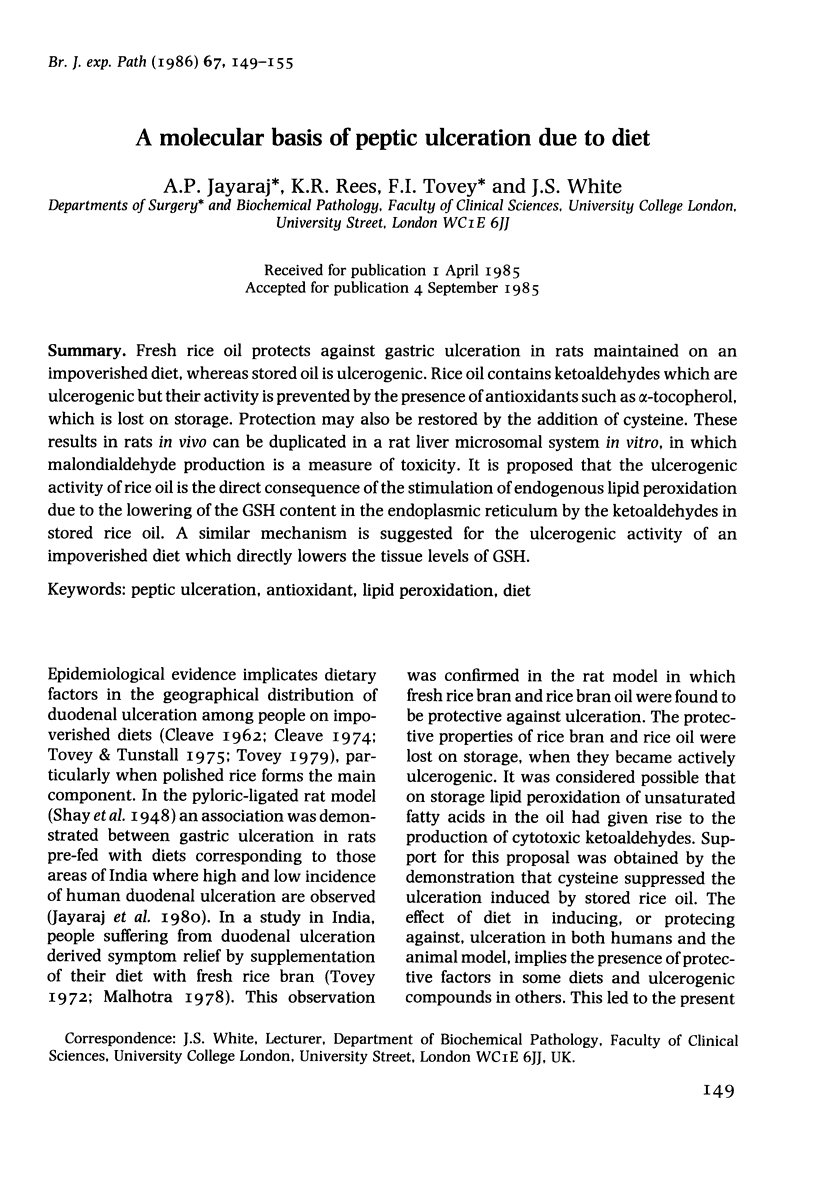
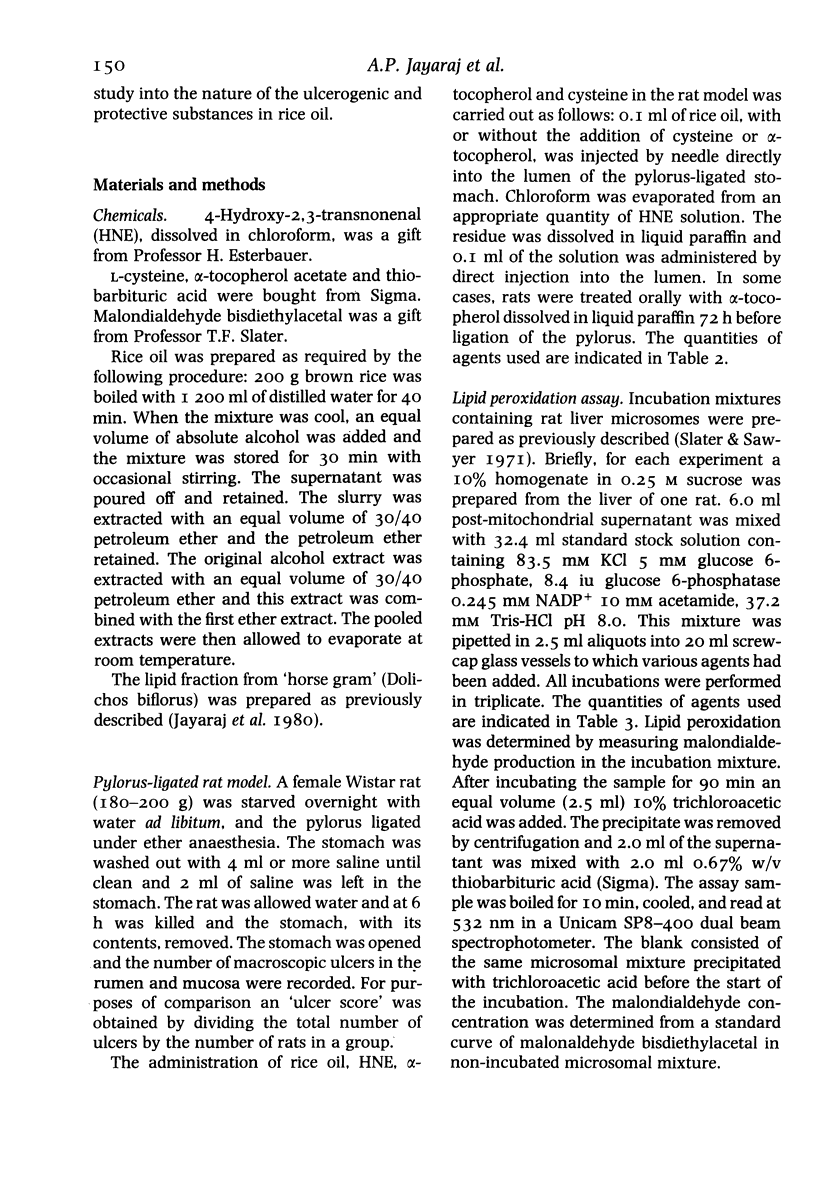
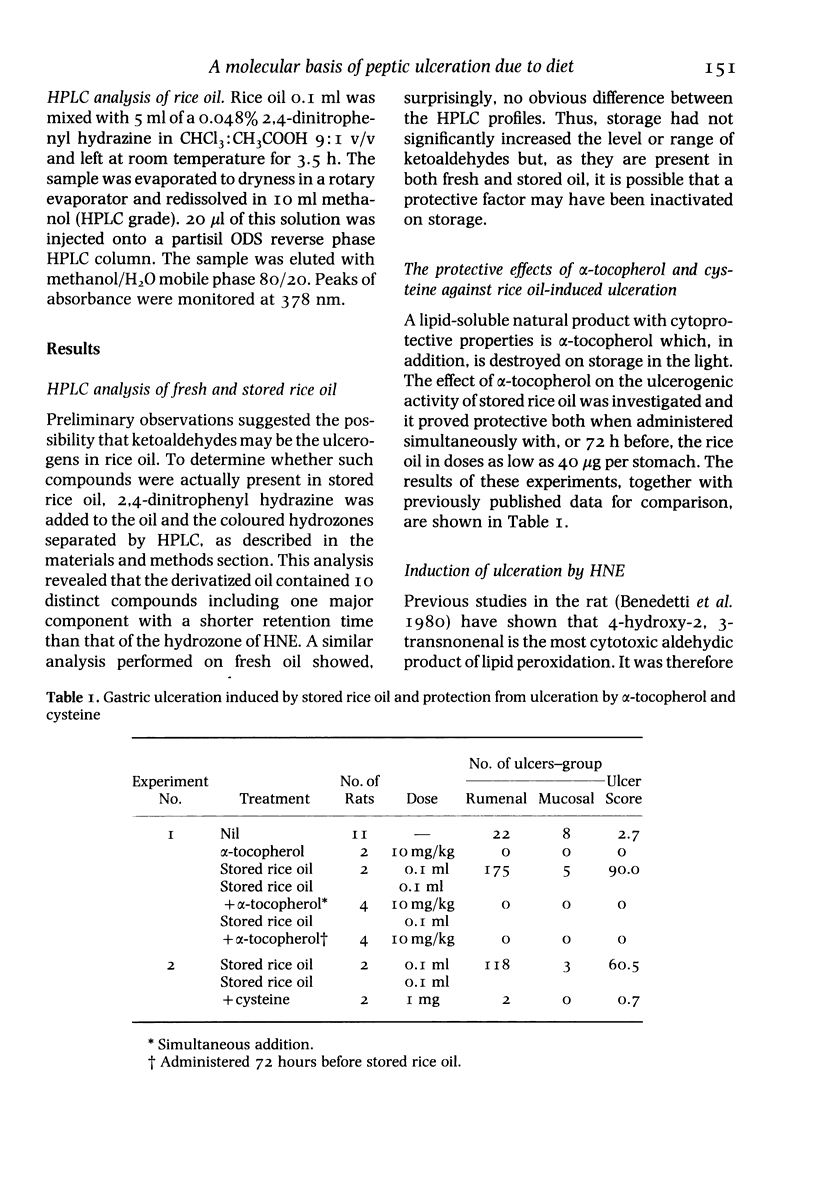
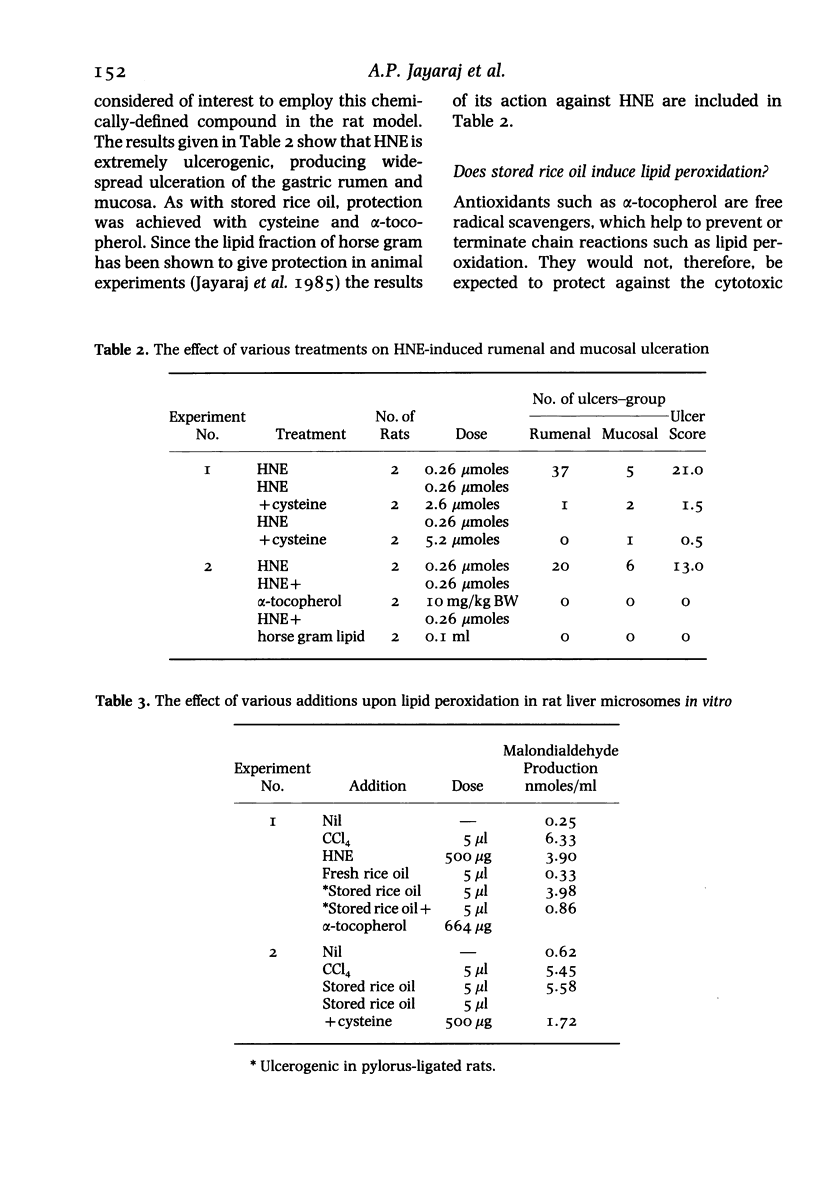
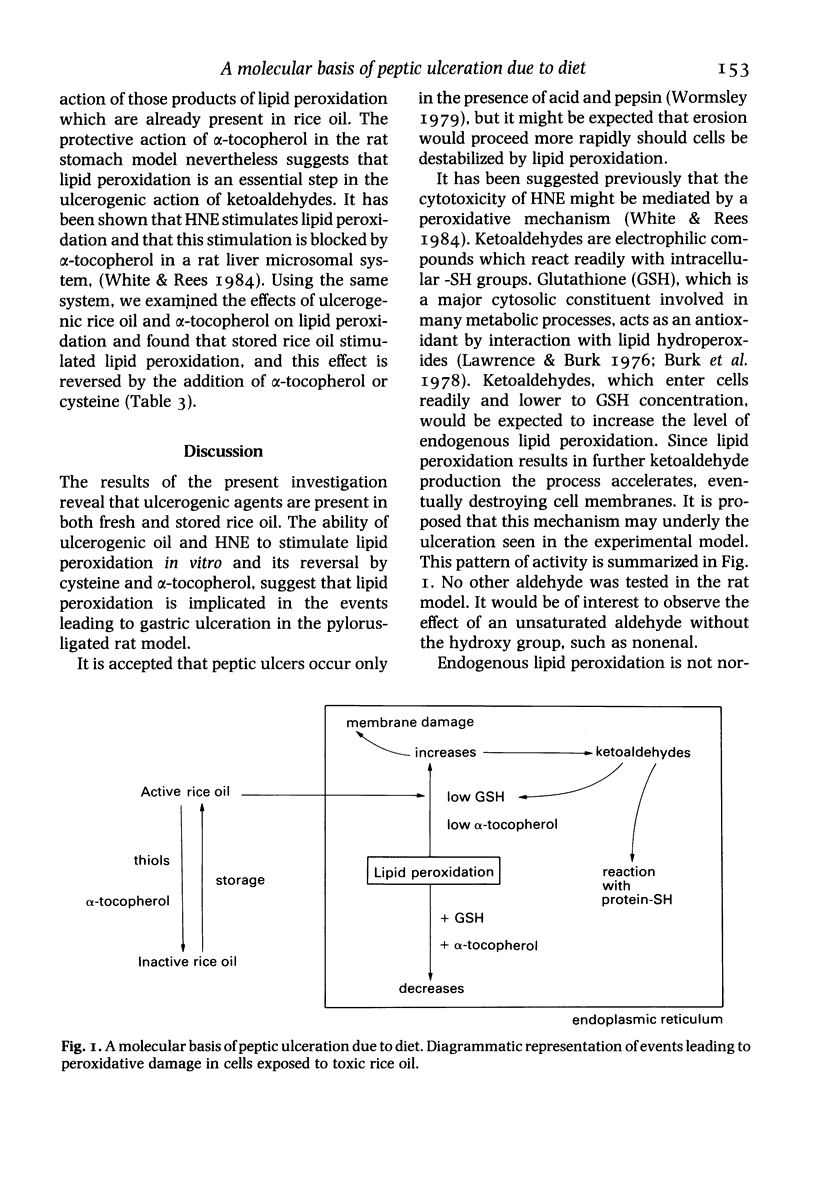

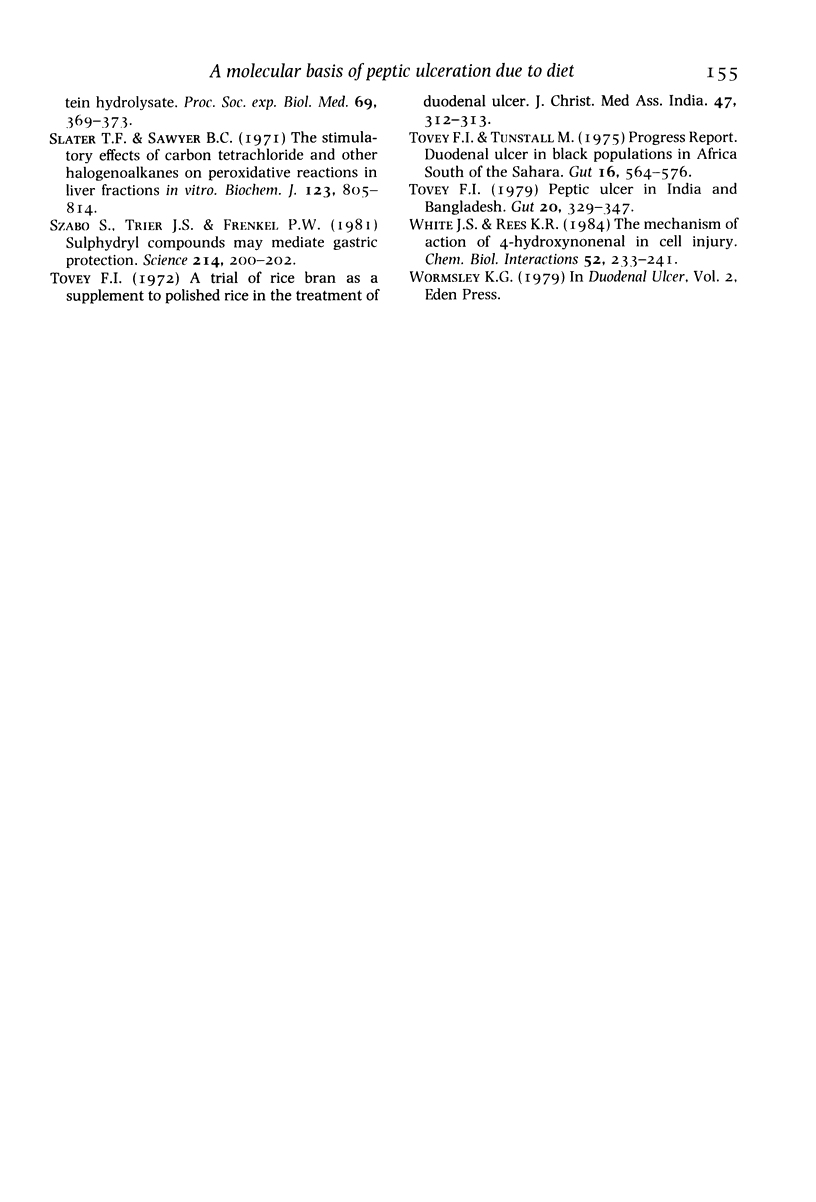
Selected References
These references are in PubMed. This may not be the complete list of references from this article.
- Burk R. F., Nishiki K., Lawrence R. A., Chance B. Peroxide removal by selenium-dependent and selenium-independent glutathione peroxidases in hemoglobin-free perfused rat liver. J Biol Chem. 1978 Jan 10;253(1):43–46. [PubMed] [Google Scholar]
- EDWARDS S., WESTERFELD W. W. Blood and liver glutathione during protein deprivation. Proc Soc Exp Biol Med. 1952 Jan;79(1):57–59. doi: 10.3181/00379727-79-19271. [DOI] [PubMed] [Google Scholar]
- Jayaraj A. P., Tovey F. I., Clark C. G. Possible dietary protective factors in relation to the distribution of duodenal ulcer in India and Bangladesh. Gut. 1980 Dec;21(12):1068–1076. doi: 10.1136/gut.21.12.1068. [DOI] [PMC free article] [PubMed] [Google Scholar]
- LINDAN O., WORK E. Experimental liver necrosis in rats. I. Changes in liver, blood and spleen glutathione and ascorbic acid levels in dietetic liver necrosis. Biochem J. 1953 Nov;55(4):554–562. doi: 10.1042/bj0550554. [DOI] [PMC free article] [PubMed] [Google Scholar]
- Lawrence R. A., Burk R. F. Glutathione peroxidase activity in selenium-deficient rat liver. Biochem Biophys Res Commun. 1976 Aug 23;71(4):952–958. doi: 10.1016/0006-291x(76)90747-6. [DOI] [PubMed] [Google Scholar]
- Szabo S., Trier J. S., Frankel P. W. Sulfhydryl compounds may mediate gastric cytoprotection. Science. 1981 Oct 9;214(4517):200–202. doi: 10.1126/science.7280691. [DOI] [PubMed] [Google Scholar]
- Tovey F. Peptic ulcer in India and Bangladesh. Gut. 1979 Apr;20(4):329–347. doi: 10.1136/gut.20.4.329. [DOI] [PMC free article] [PubMed] [Google Scholar]


